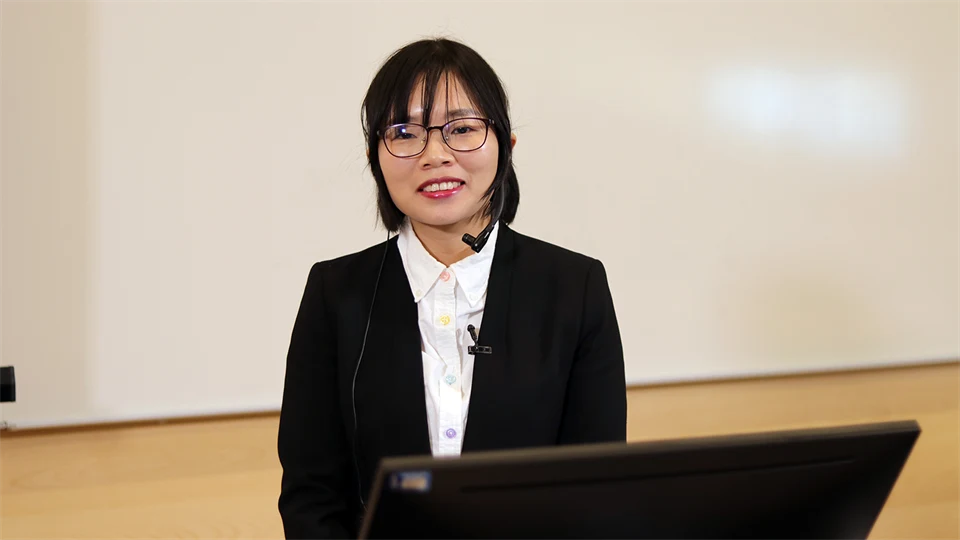Miun researcher Yali Nie has taught AI to detect skin cancer
Through deep learning, Yali Nie has allowed AI to be able to detect dangerous skin lesions in early stages. In some cases, so early and so clearly that they have given better results than dermatologists' diagnoses. The hope is that the new technology will be able to save lives.
Melanoma is the most common form of skin cancer and at the same time the cancer that is increasing the most. The chance of survival is drastically increased if detected early. With the help of dermatoscopic images, photos taken using a magnifying loop, one can identify skin lesions but it can be difficult for the human eye to classify the skin changes. By deep learning AI to read and interpret images of skin changes, Yali Nie, a researcher in electronics at Mittuinversitet's Department of Computer and Electrical Engineering, DET, has found a way to classify the damage.
How did you learn the AI to detect and classify the skin lesions?
– I learned the fundamentals of machine learning: It is important to have a strong understanding of the principles and techniques of machine learning before diving into specific applications. This includes understanding different types of algorithms, how to train and evaluate models, and how to handle different types of data.
– I gathered and preprocessed data: Collect a dataset of skin lesion images or use a public one, along with labels indicating the type of lesion present. It is important to ensure that the data is of high quality and that the labels are accurate. Preprocessing steps, such as image normalization and augmentation, may also be necessary.
– I choose a suitable algorithm: There are many different machine learning algorithms that can be used for image classification, but convolutional neural networks (CNNs) are currently the most commonly used for skin lesion detection and classification.
– I trained the model: Use the dataset to train the chosen algorithm, using techniques such as cross-validation to ensure that the model is generalizable.
– I evaluated the model: Use a separate validation dataset to evaluate the performance of the model, using metrics such as accuracy, precision, and recall.
– I refined the model: Iterate on the model architecture and parameters to improve its performance and generalizability.
– I tested the model on new data: Finally, test the model on a new, unseen dataset to ensure that it can generalize to new cases.
– It is worth noting that developing an accurate and reliable AI model for skin lesion detection and classification is a complex and challenging task that requires a strong background in machine learning and computer vision. Additionally, it is important to work with qualified healthcare professionals to ensure that the model is safe and effective for clinical use.
How certain is this method?
– The creation of such models frequently makes use of big datasets of images of skin lesions along with labels identifying the kind of lesion that is present. The features and patterns that distinguish various kinds of skin lesions are taught to machine learning algorithms, such as convolutional neural networks, using these datasets. The classification of fresh images of skin lesions can then be done using the trained model.
– The amount and quality of the training dataset, the complexity of the model architecture, and the caliber of the data used to validate the model all affect how accurate and certain these models are. In general, models for classifying skin lesions have produced encouraging results and are being applied more frequently in clinical settings. They must, however, be used in conjunction with a clinical evaluation by a licensed healthcare practitioner because they are not error-free and may still make mistakes.
When can it be used on patients?
– Regulatory approval and the availability of appropriate technology will determine how AI skin lesion detection and classification models are used on patients. In clinical settings, certain models have already acquired regulatory approval. To assure its effectiveness and safety, more study and validation are required because the application of AI in healthcare is still relatively new.
What happens next?
– The development and deployment of AI skin lesion detection and classification models' next steps will probably involve more algorithmic tinkering to boost the algorithms' precision and dependability as well as validation tests to show the models' efficacy in actual clinical situations. To enable more effective and efficient patient care, there will also probably be ongoing efforts to link these models with electronic health records and other clinical systems.
Yali Nie defended her thesis "Deep Learning Approaches Towards Skin Lesion Classification with Dermoscopic Images" as late as in February.
